This was a momentous day. November 1st. I hardly know where to begin. I’d always imagined Day of the Dead as a festivity that belonged to family and community and the thought of being a voyeur did not appeal, no matter how colorful an opportunity. In any case the closest I’d come was arriving in Oaxaca just after the celebration a couple of years prior. But here I was in San Cristóbal de las Casas, the day was approaching and I wanted to visit San Juan Chamula anyway, just 10 kilometers away in the hills above town, so it was kind of hard to resist. I’d decided this was a time when a small group tour made sense, Alex y Raúl Tours came highly recommended so I sent them an email. César’s response was as follows:
Hello Joanna,
We operate every day the excursion to the indigenous communities of Chamula and Zinacantán. The tour is from 9:30 am to 2:00 or 2:30 pm. The cost is $250 pesos per person and includes transportation, entrance fees and guide in English.
Thursday is a good day. If you want to join the tour just arrive to the meeting point before 9:30 am. The meeting point is the cross located in the front of the cathedral, attached to this message I send a picture of it.
Best regards,
César
Alex y Raúl Tours
On Thursday morning I set out on the short walk to the meeting point in the center of San Cristóbal. As always, I was early with time to watch the goings-on in the big open square in front of the cathedral, across the road from the zocalo. It was almost empty when I arrived except for the lady sweepers with their palm frond brooms and a group of souvenir sellers organizing for the day.
When about a dozen participants had gathered at the appointed time we were escorted a short distance to 2 vans, divided about equally by language preference, Spanish or English, loaded up accordingly and we set off. Arriving in Chamula, parking on the edge of town, the 2 groups diverged as we walked downhill through an open market to the action in the large open square in front of the church. César warned us that, as in many places, taking pictures of people was frowned upon but, most particularly, absolutely forbidden inside the church, at one’s peril.
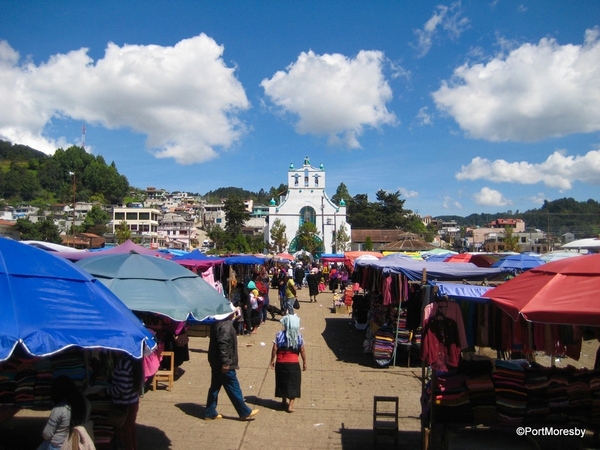
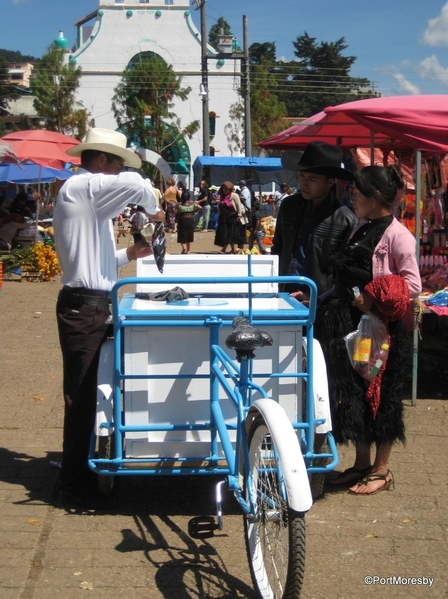
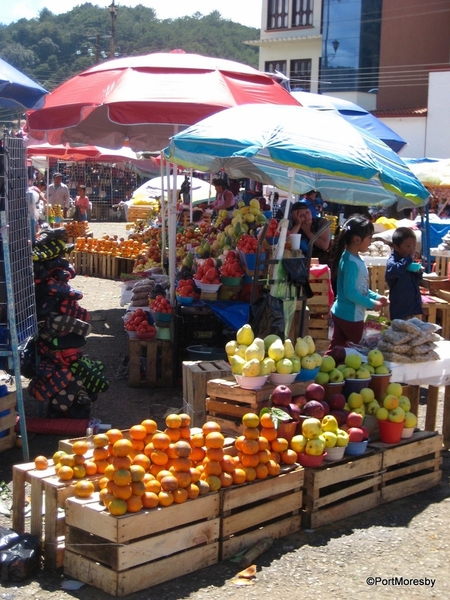
The more I learned about the local Tzotzil people of Chiapas the more I was intrigued, intimidated even. Chamula has it’s own police force with no outside law-enforcement, not even the Mexican army allowed. The town and it’s spiritual life is administered by an elected group called mayordomos, recognizable in the activities at the church by the distinctive accessories to their traditional Tzotzil clothing.

Above & below, lining up to ring the church bells.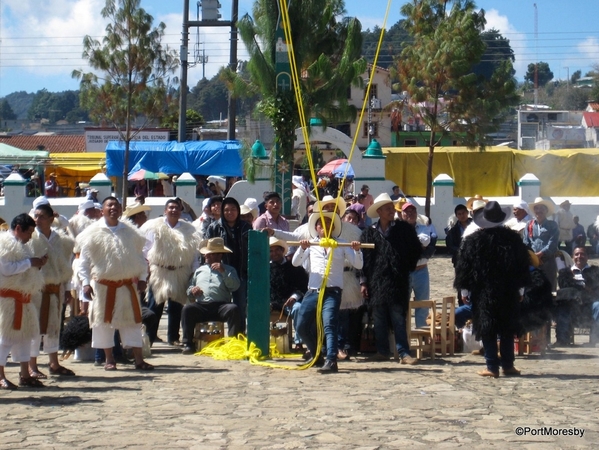
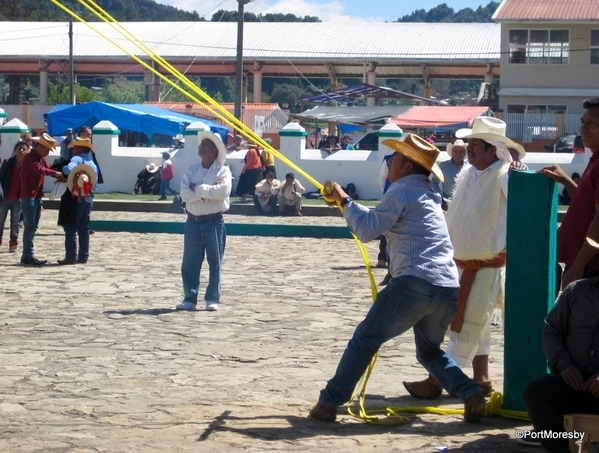
The complicated history of the town’s church, the Templo de San Juan Chamula, and its religious practices, seem to me to be perfectly representative of the independence of the Tzotzil people. The Dominicans arrived in Chiapas in the 16th century but had little success converting the Maya people. The story goes that over the centuries the Catholic priests tried incorporating indigenous beliefs into Christian rituals until finally, in 1974, the last resident Catholic priest left Chamula. The church continues as the heart of the community’s spiritual life but Catholics will find the practices unrecognizable.
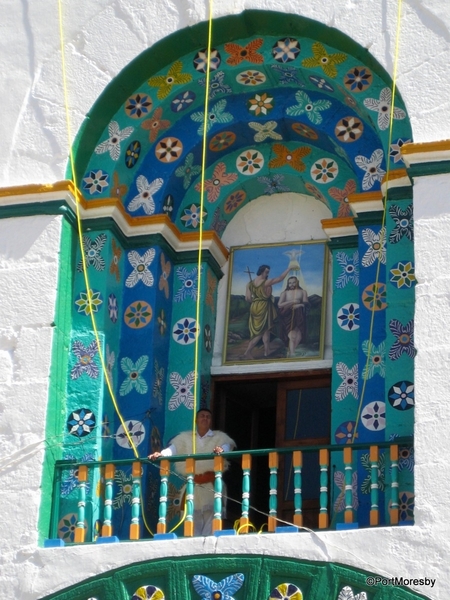
Below, waiting by the church entrance.
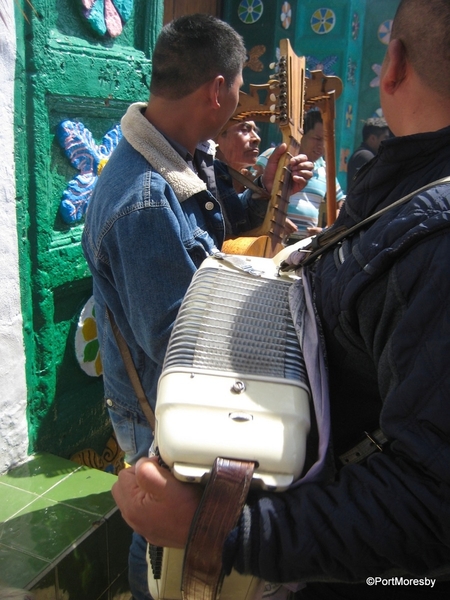
Our group was asked to wait outside for some time due to the press of local people inside and, I suspect, because of the nature of ceremonies being conducted. I wish I could give a comprehensive description of what I saw when we finally entered, but I could see very little beyond my next step. It was dark, lit only with candles on the floor, the air thick with incense smoke, no pews, the rituals taking place down the 2 sides of the church beneath pictures of many saints, seemingly more important ceremonies on raised areas in the center, with the shuffling crowd moving body-to-body among them.
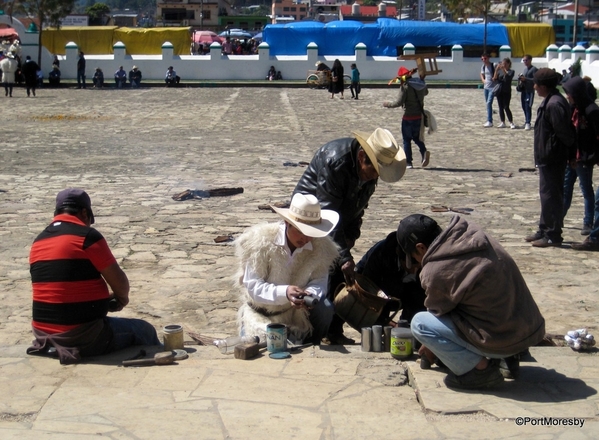
Above, assembling fireworks & below, human rocket launchers.
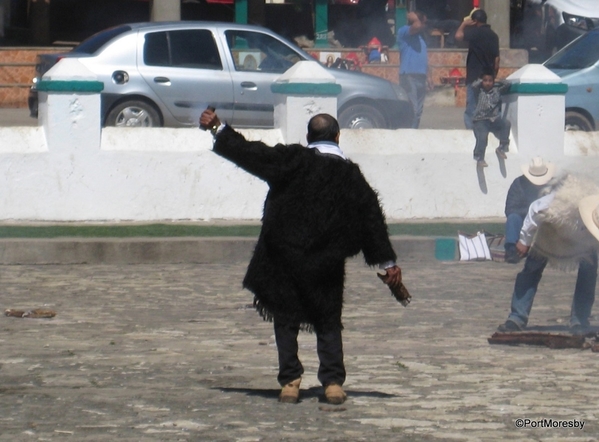
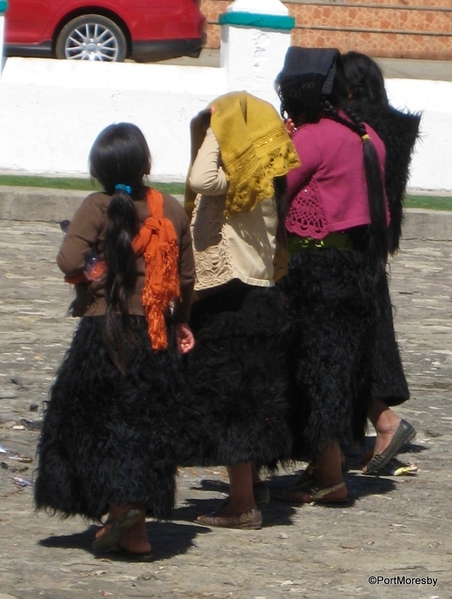
Tradtional Tzotzil woven clothing, black for winter, white in warmer weather.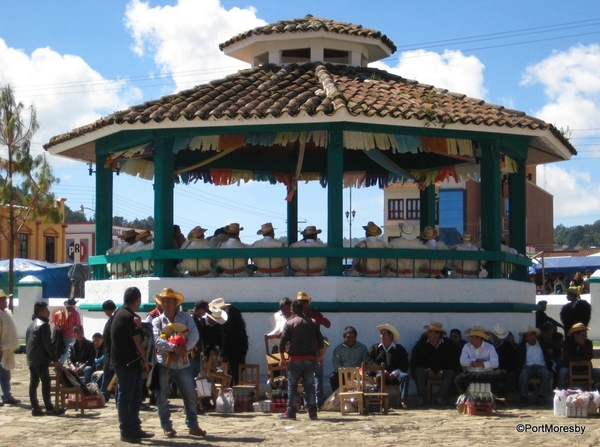
César explained that elements of the rituals inside the church incorporate the region's indigenous alcoholic beverage, pox (pronounced posh), and coca cola, thought to cure a variety of maladies. Activities include curanderos (healers), animal sacrifices and caretakers at the saints’ alters. Though I was clueless about what was happening around me, the intensity was palpable and all I could do was succumb to the ambiance of this remarkable place, move slowly with the crowd until ultimately we stepped over the threshold again into the brilliant sunshine and din of exploding fireworks and ringing church bells.
After experiencing the intense activities in and around the church we walked uphill across town to the cemetery, the other center of the community’s observance of Day of the Dead.
Find all episodes of 'A Month in Chiapas' here.
More PortMoresby stories here.

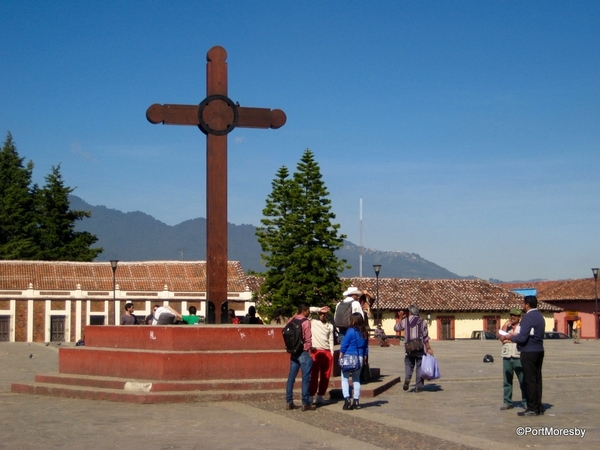
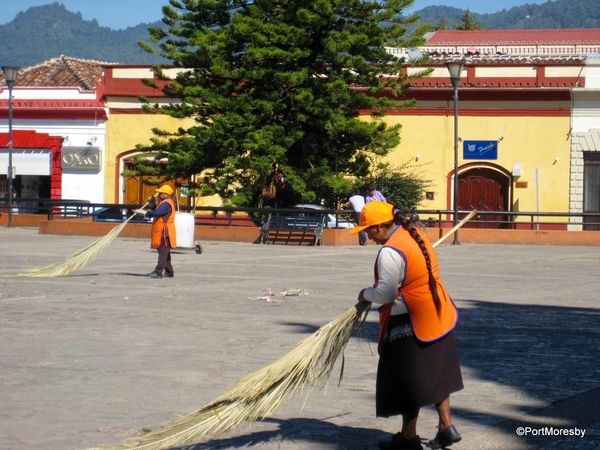
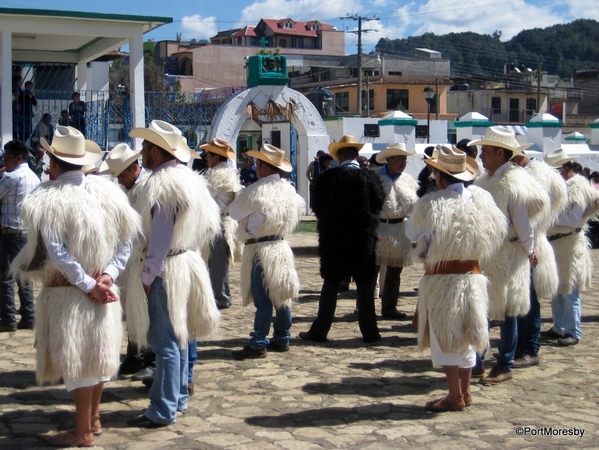
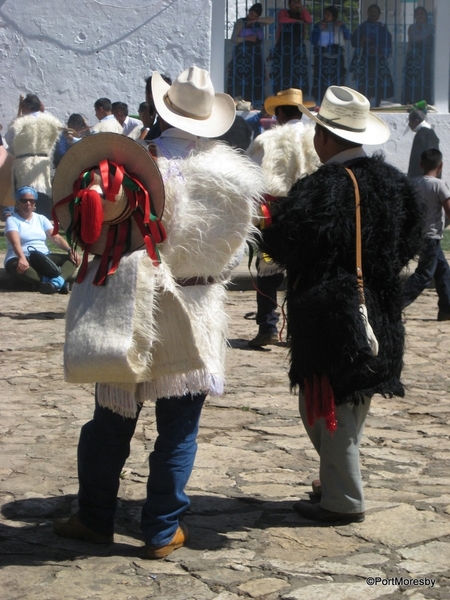
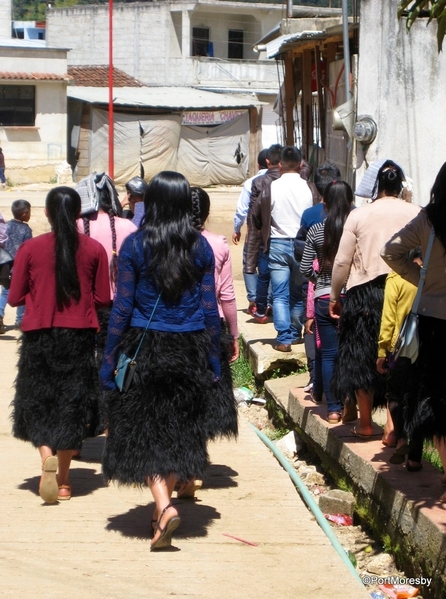
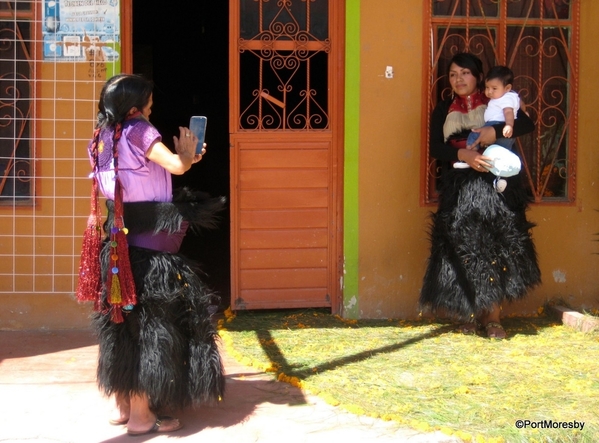
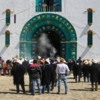


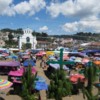



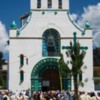












Comments (1)